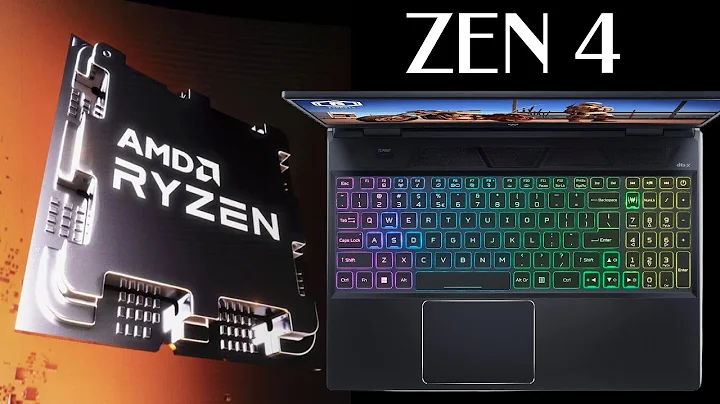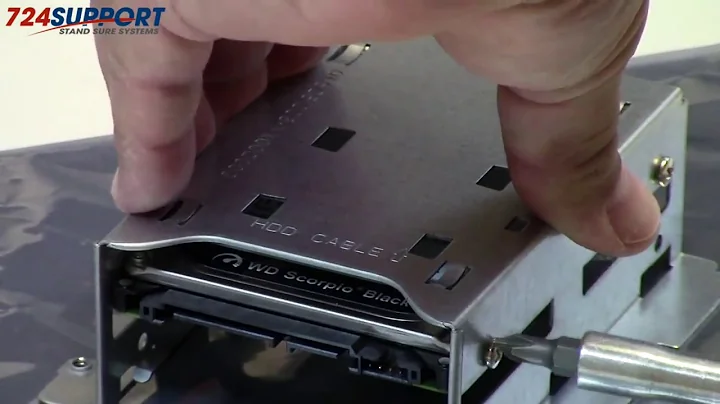Optimal Hardware Specifications for SolidWorks 3D CAD
Table of Contents
- Introduction
- Understanding SolidWorks Hardware Requirements
- SolidWorks as a Design Tool
- Choosing the Right Processor
- Optimal RAM Configuration
- Selecting the Perfect Graphics Card
- SolidWorks as a Visualization Tool
- Graphics Card Requirements
- RAM Considerations
- SolidWorks as a Simulation Tool
- Multithreaded Processing Power
- ECC Memory and Lengthy Simulations
- Cost vs. Benefit Analysis
- General Considerations for SolidWorks Hardware
- Solid State Drives for Improved Performance
- Operating System Selection
- Conclusion
🖥️ Understanding SolidWorks Hardware Requirements
SolidWorks is a powerful 3D CAD software widely used in various industries for designing and simulating complex models. To ensure optimal performance and productivity, it is crucial to choose the right hardware configurations. This article aims to guide you through the hardware requirements for running SolidWorks and provide insights into the best investment choices.
🎨 SolidWorks as a Design Tool
If your primary use of SolidWorks is focused on part modeling, assembling components, and creating 2D drawings, there are certain hardware considerations to keep in mind.
💻 Choosing the Right Processor
SolidWorks predominantly operates on a single-threaded basis, meaning it can only handle one task at a time. In this case, prioritize processors equipped with turbo boost technology, as they can efficiently handle tasks at higher speeds. Instead of focusing on the number of cores, look for an Intel chip with a high turbo boost speed for optimal performance.
Pros: Faster task execution, improved single-threaded performance.\
Cons: Limited multitasking capabilities.
💾 Optimal RAM Configuration
Upgrading RAM is often seen as a quick fix for a sluggish machine, but it's important to determine whether more RAM is actually needed. If your current machine isn't running out of memory, consider buying a machine with spare memory slots. This way, you can add more RAM in the future as needed. For most users, a sweet spot of 16 to 32 gigabytes of RAM should suffice.
Pros: Enhanced performance during memory-intensive tasks.\
Cons: Unnecessary expenditure if current RAM usage is low.
🖥️ Selecting the Perfect Graphics Card
When working with SolidWorks, tasks such as zooming, panning, rotating, and interrogating models heavily rely on the graphics card's capabilities. It is crucial to choose a professional CAD-grade graphics card for optimal performance. Gaming cards are not supported and may cause issues, so it's recommended to opt for a graphics card from Nvidia's Quadro range. For most users, a mid to mid-high range card with at least 4 gigabytes of memory is sufficient.
Pros: Smoother and faster operations, improved productivity.\
Cons: High-end graphics cards may be cost-prohibitive for some users.
🌆 SolidWorks as a Visualization Tool
If you use SolidWorks for photo-realistic renders and animations, additional hardware considerations come into play.
🖼️ Graphics Card Requirements
To leverage SolidWorks Visualize, which utilizes Nvidia's Iray technology, it is advantageous to invest in a graphics card with higher capabilities. By spending a bit more on a graphics card, you can significantly reduce rendering times and increase productivity. However, the highest-spec graphics cards are not necessary for the majority of users. A mid to mid-high range card with at least 4 gigabytes of memory should suffice, as it allows for future upgrades to leverage advancements in technology.
Pros: Faster rendering times, improved productivity.\
Cons: High-end graphics cards may not be justifiable for all users.
💾 RAM Considerations
Rendering operations in SolidWorks often require a significant amount of memory. If rendering is a key focus for you, consider investing in at least 32 gigabytes of RAM for optimal performance.
Pros: Enhanced performance during rendering operations.\
Cons: Higher cost associated with larger RAM capacities.
🔬 SolidWorks as a Simulation Tool
When SolidWorks is used as a simulation tool, there are specific hardware considerations that differ from using it as a design or visualization tool.
💪 Multithreaded Processing Power
Unlike the single-threaded nature of design tasks, SolidWorks simulation makes use of multiple cores. Therefore, investing in a CPU with multiple cores will provide a performance boost. Additionally, prioritize processors with good turbo boost speeds to optimize both design and simulation tasks. Furthermore, the Xeon range of processors from Intel supports ECC (Error-Correcting Code) memory, which is particularly useful for running lengthy simulations.
Pros: Increased performance during simulation tasks, improved multitasking capabilities.\
Cons: Higher cost associated with processors supporting ECC memory.
💰 Cost vs. Benefit Analysis
It's essential to weigh the cost implications of investing in multiple cores and ECC memory. If lengthy, complex simulations are not a regular part of your workflow, the additional cost may not be justified. Consider your specific requirements and evaluate the potential benefits before adding these items to your shopping list.
💡 General Considerations for SolidWorks Hardware
Regardless of how you intend to use SolidWorks, there are general hardware considerations to keep in mind.
⚡ Solid State Drives for Improved Performance
While not necessary for running SolidWorks itself, using a solid-state drive (SSD) can significantly improve overall performance. SSDs allow applications to load faster and files to open quickly. Although larger SSD drives can be expensive, consider adding a cheaper traditional hard drive for extra storage capacity.
Pros: Faster application loading and file opening times.\
Cons: Higher cost associated with larger SSD capacities.
🖥️ Operating System Selection
SolidWorks is a 64-bit Windows application compatible with Windows 7 and Windows 10. Opt for Windows 10 Professional as it is the most recent version and allows you to leverage the latest technology. If you are using a Mac, it is possible to run SolidWorks through either Parallels or Boot Camp.
🚀 Conclusion
Choosing the right hardware configurations for running SolidWorks is crucial for optimal performance and productivity. By understanding the specific requirements for design, visualization, and simulation tasks, you can make informed decisions when purchasing a new machine or upgrading an existing one. Consider factors such as processors, RAM, graphics cards, storage drives, and operating systems to ensure a smooth and efficient SolidWorks experience.
Highlights
- Understanding SolidWorks hardware requirements is crucial for optimal performance and productivity.
- SolidWorks as a design tool requires a processor with high turbo boost speed, optimal RAM configuration, and a professional CAD-grade graphics card.
- SolidWorks as a visualization tool benefits from a graphics card with enhanced capabilities for faster rendering times and improved productivity.
- SolidWorks as a simulation tool requires a CPU with multiple cores, preferably with good turbo boost speeds, and ECC memory for lengthy simulations.
- General considerations include using solid-state drives for improved performance and selecting a compatible operating system, preferably Windows 10 Professional.
FAQ
Q: Is there a specific brand or model of graphics card recommended for SolidWorks?
A: We recommend opting for graphics cards from Nvidia's Quadro range, as they are proven to have the best performance and support for SolidWorks tasks.
Q: Do I need a high-end graphics card for SolidWorks?
A: Unless you are primarily focused on visualization tasks or high-end rendering, a mid to mid-high range graphics card with at least 4 gigabytes of memory should suffice for the majority of users.
Q: Can I run SolidWorks on a Mac?
A: While there is no native install for SolidWorks on Mac, you can run it through virtualization software such as Parallels or by using Boot Camp and installing a compatible version of Windows.
Q: How much RAM do I need for SolidWorks?
A: For most users, a sweet spot of 16 to 32 gigabytes of RAM is recommended. However, if rendering is a key focus, investing in at least 32 gigabytes of RAM is advisable.
Q: Should I prioritize a higher number of processor cores or turbo boost speed for SolidWorks?
A: For design tasks in SolidWorks, turbo boost speed is more important than the number of cores. However, for simulation tasks, a CPU with multiple cores and good turbo boost speed will provide the best performance.
 WHY YOU SHOULD CHOOSE TOOLIFY
WHY YOU SHOULD CHOOSE TOOLIFY
































